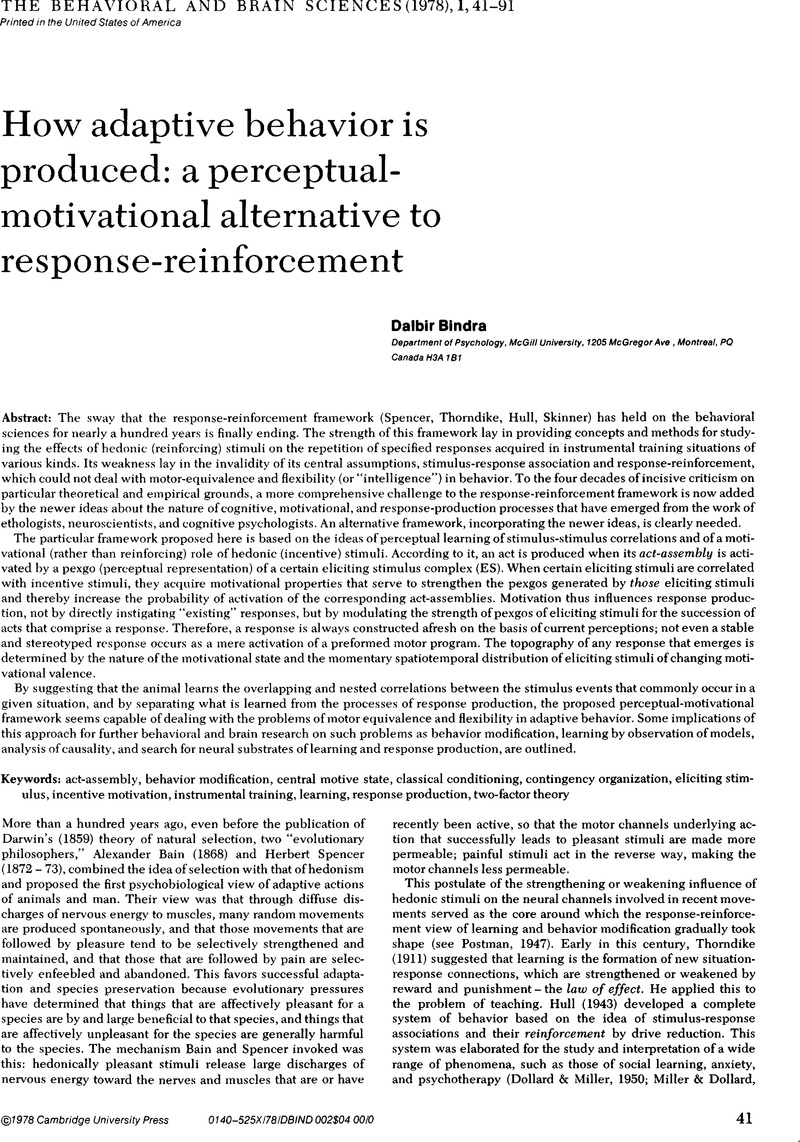No CrossRef data available.
Article contents
Reinforcement is dead; long live reinforcement theories
Published online by Cambridge University Press: 04 February 2010
Abstract
An abstract is not available for this content so a preview has been provided. Please use the Get access link above for information on how to access this content.

Information
- Type
- Open Peer Commentary
- Information
- Copyright
- Copyright © Cambridge University Press 1978
References
REFERENCES
Baum, W. M., and Rachlin, H. C.Choice as time allocation. Journal of the Experimental Analysis of Behavior. 12:861–74.1969.CrossRefGoogle ScholarPubMed
Bolles, R. C.Species-specific defense reactions and avoidance learning. Psychological Review. 77:32–48.1970.CrossRefGoogle Scholar
Cohen, I. L.The reinforcement value of schedule-induced drinking. Journal of the Experimental Analysis of Behavior. 23:37–44.1975.CrossRefGoogle ScholarPubMed
de Villiers, P. A. Choice in concurrent schedules and a quantitative formulation of the law of effect. In: Honig, W. K. and Staddon, J. E. R. (eds.), Handbook of Operant Behavior. Englewood Cliffs, N.J., Prentice-Hall, 1977.Google Scholar
de Villiers, P. A. and Hermstein, R. J.Toward a law of response strength. Psychological Bulletin. 83:1131–53.1976.CrossRefGoogle Scholar
Hermstein, R. J.On the law of effect. Journal of the Experimental Analysis of Behavior. 13:243–66.1970.CrossRefGoogle Scholar
Killeen, P.The matching law. Journal of the Experimental Analysis of Behavior. 17:489–95.1972.CrossRefGoogle ScholarPubMed
Mazur, J. E.The matching law and quantifications related to Premack's principle. Journal of Experimental Psychology: Animal Behavior Processes. 1:374–86.1975.Google Scholar
Quantitative studies of reinforcement relativity. Journal of the Experimental Analysis of Behavior. 27:137–49.1977.CrossRefGoogle Scholar
Miller, H. L.Matching-based hedonic scaling in the pigeon. Journal of the Experimental Analysis of Behavior. 26:335–47.1976.CrossRefGoogle ScholarPubMed
Navarick, D. J., and Fantino, E.Self-control and general models of choice. Journal of Experimental Psychology: Animal Behavior Processes. 2:75–87.1976.Google Scholar
Premack, D. Reinforcement theory. In: Levine, D. (ed.), Nebraska Symposium on Motivation. Lincoln, Neb., University of Nebraska Press, 1965.Google Scholar
Catching up with common sense or two sides of a generalization: Reinforcement and punishment. In: Glaser, R. (ed.), The Nature of Reinforcement. New York, Academic Press, 1971.Google Scholar
Rachlin, H.On the tautology of the matching law. Journal of the Experimental Analysis of Behavior. 15:249–51. 1971.CrossRefGoogle ScholarPubMed

